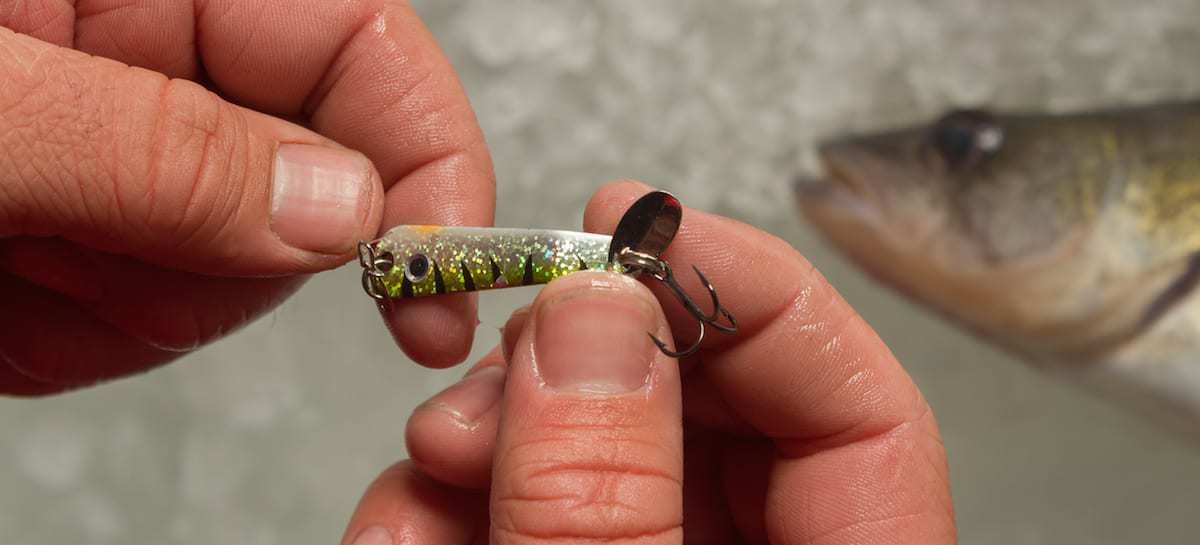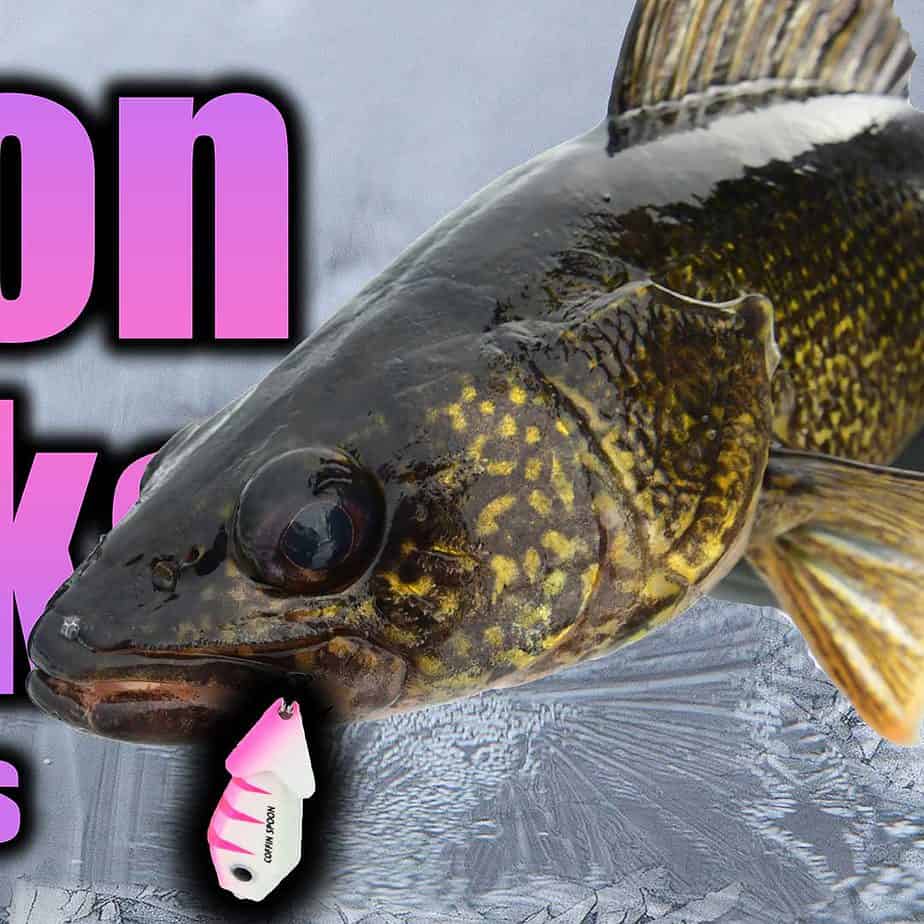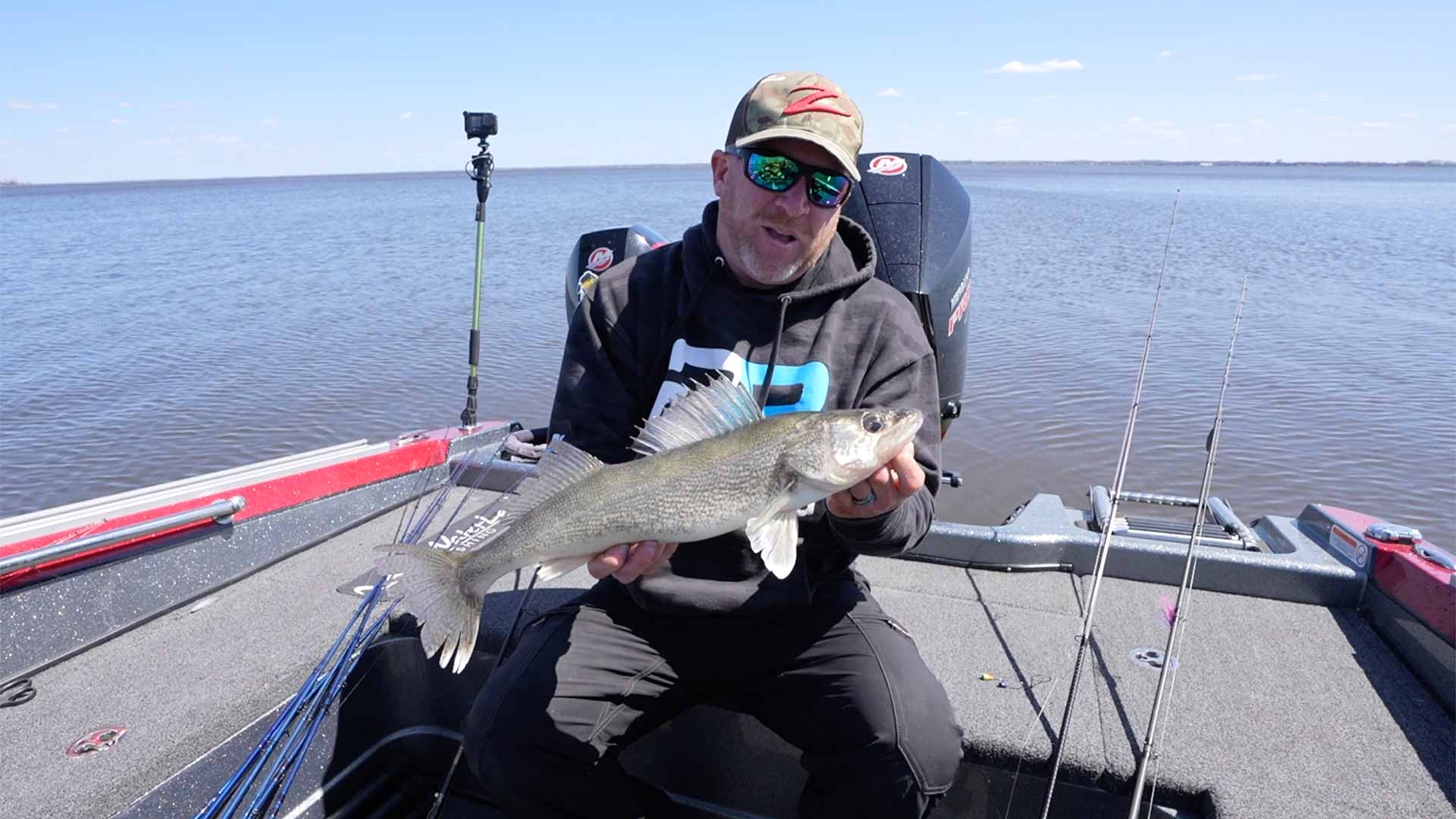Brad Hawthorne has amassed more time on the water fishing walleye spoons in the past decade than just about any ice-fishing guide out there. With stints on Minnesota’s Mille Lacs, Upper Red Lake, and Lake of the Woods, there are few stones he’s left unturned in terms of ice presentations that work for walleyes, especially during tough bites.
Walleye Spoons: Souped-Up Tips and Mods
I’ve come to appreciate that need to produce, as with necessity being the mother of all invention, new ideas spring forth from difficult bites.
Let’s face it, no matter how much we love fishing, there are days when most of us would prefer not to fish. High fronts after a spiked barometer and blistering wind events after a snowstorm, guys like Brad are out there, putting clients on fish. Perhaps more importantly, they’re devising new ways of thinking on old tactics that flat-out produce when the originals fall short. This enviable creel of tweaks have evolved on some of the most heavily pressured walleye waters in the state, thus requiring them to be proven and re-proven each and every season, no matter which forage ‘eyes are keying in on.

Spoons are a staple in any walleye angler’s box, and constitute the bulk of ice walleye baits on the market, such that Brad’s primary focus is manipulating all aspects of the way they fish.
“At first I started tinkering with creating some separation in my baits, mostly on account of seeing certain bites where walleyes focus so heavily on whatever you tip your spoon with. At that point, your lure is like a dumb waiter that drops food below the ice. A bait delivery method,” says Hawthorne.
“Long dropper chains that work well for perch can be utilized, but are oven overkill and present their own problems. I found pretty early on that by adding just one more split ring between the existing split ring and hook on most spoons, I could dramatically increase the number of fish I’d convert on my flasher when ‘eyes were heavily keying in on bait. The action was just incredible, and the freedom that extra split ring gives the business end of your lure and bait are well worth the price of admission.”
“This is a go-to for lethargic fish. With stamped metal spoons that flutter or wobble on the drop, the effect can be even more impressive,” notes Hawthorne.
“Most of these spoon types have a bend in them, creating that wiggle. Add another split ring to these baits, and you can still get that motion, but dropping on a tighter line causes the same bait to coast off past the edges of the hole, gliding like a manta ray and enticing fish that aren’t directly below you,” says Brad.
“I really like these baits when fishing new areas or scouting. Just multiply the extra couple of feet you cover off to the sides by the number of holes you cut in a day, and you’re really getting at more fish in the same water.”
Even neutral-to-aggressive fish can be targeted more effectively with some walleye spoons hacks.
A simple one is just a treble hook with a single drop of glow epoxy where each hook bend meets the hook body. By switching out factory hooks with some of these new glow-resin trebles out there, you can help to prevent fish from eating your spoon and not your hooks, a problem more prevalent than you might think.
Ever check out your walleye spoons on an underwater camera and notice how difficult it is to see the hooks in certain water clarity and conditions, especially without bait? Ever see fish on camera swing for the top of the bait (where the eye usually is painted) and miss? Ever hook them on the outside of the face or miss a sure bite altogether? Aggressive fish coming in for the kill often focus on the eyes of the bait, and especially if you’ve jigged your hook clean of bait, this happens more than you might think.
Hawthorne says, “I used to get these in Canada before they were available in the states, and have long since made use of them.”
He notes an example from one of Minnesota’s great walleye lakes, “Everyone knows that gold is a great color on Lake of the Woods, however, it’s far less visible, and just isn’t as good early and then again late in the day. Adding a glow-resin treble to that same bait extends your bite window, making that same bait more effective for longer. Especially on the lakes with a bit of stain or poorer water clarity, I’m convinced that these visual aids put more fish on the ice for my clients.”

Some spoons come pre-packed with willow-leaf or small Indiana-style blades, but Hawthorne cautions to study their action before putting them to use. A few baits in particular react well to this additional blade, but others can kill the action of the spoon, causing the bait to roll, or even prevent solid hookups by covering hook gaps. Of course the net gain is potentially extra flash, a little more noise, and a fish-triggering design. Again, careful observation wins out, and is especially useful when the bite is on.
Tweaks like these are the difference between a good day and a great day, and are best tested in a target-rich environment. In other words, when the bite is hot, tinker with these small differences to see how fish react to them.
Action-killing additions that get in the way and prevent bites when fish are active then, need to be avoided when fish are negative. Still, learning what doesn’t work well together is an important part of the process that’s different for each bait and size.
Novel approaches like these have earned Brad a living as an ice-guide, and for you, they present an opportunity to get the most of the days we do get to fish. They also offer us the chance to fish with something that you just can’t buy straight out of the box, which may be just the look you need to impress walleyes that have already seen it all.












